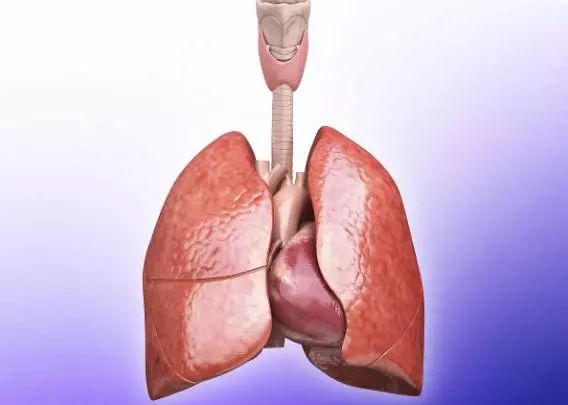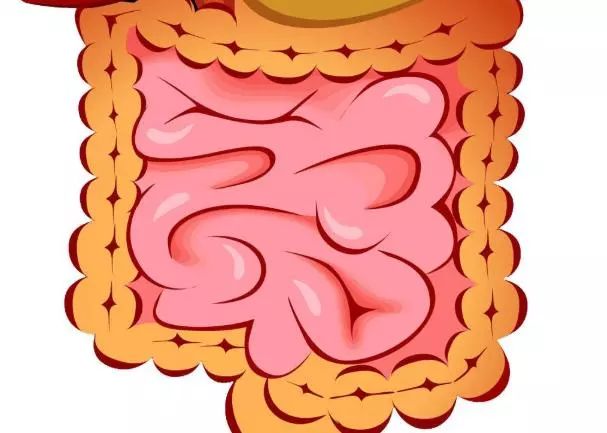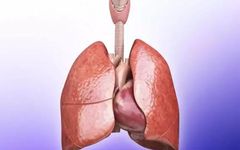Note: This article was first published on Toutiao, and the public account was released late, resulting in others publishing it first, which prevents me from claiming originality. Although there is no original mark, it is still my original work. I do not intend to file a complaint as it is meaningless. Please continue to support!
The relationship between the lungs and the large intestine, and the heart and the small intestine, is a concept in Traditional Chinese Medicine (TCM). Many professional terms in TCM are not easy to understand, so we can set them aside and focus on the structure and laws of the human body, examining whether these laws correspond to the TCM perspective.
We know that the heart beats, generating not only blood pressure but also a significant amount of heat. Some may ask why we say there is heat; this is common knowledge. Continuous beating generates heat—try jumping and see for yourself. From a physics perspective, kinetic energy produces thermal energy.
The natural property of heat is to radiate outward and upward. If not utilized, this heat will be completely lost, which is an inefficient energy model where energy is not recycled. The reason we say the human body is intelligent is due to its excellent energy recycling model.
The lungs are located outside and above the heart, and most of the heat generated by the heartbeat will reach the lungs. In TCM, the lungs are referred to as ‘metal’ (金, jīn) because metal is the most heat-resistant. When heart fire reaches the lungs, it causes lung heat, a process known as ‘fire overcoming metal’ (火克金, huǒ kè jīn). The worse the lung condition, the more prone one is to lung heat. For some individuals with rhinitis, even slight exercise can cause heat to rise in the nasal cavity, indicating lung heat.

In TCM, the lungs are said to be ‘metal’; however, are the lungs truly heat-resistant? Clearly, they are not. The lungs are often described as delicate organs that are easily damaged, so how can they not fear heat? How do the lungs handle this heat? The lungs govern respiration. The air entering through the respiratory tract can facilitate heat exchange in the lungs. Think of an air conditioner in summer, which removes indoor heat and replaces it with cooled air.
The heat generated by the heartbeat is originally directed upward, but when it reaches the lungs, the ambient air drawn in through the respiratory tract is relatively cool compared to this heat. This cool air descends vertically, helping to cool down the body. Simultaneously, it can transport heat downward to where? To the intestines.
We know that the primary site for nutrient absorption in the body is the small intestine. Why can the small intestine absorb nutrients? From a biochemical perspective, it is due to digestive fluids such as pancreatic juice and bile extracting nutrient molecules from food. Many chemical reactions require heat to proceed; even though enzymes and coenzymes in the body do not need high reaction temperatures, they still require heat.
This heat comes from heart fire. The heat from the heartbeat, propelled by lung qi (气, qì), reaches the small intestine. Therefore, TCM considers heart fire as ‘sovereign fire’ (君火, jūn huǒ), while the small intestine is associated with ‘ministerial fire’ (相火, xiàng huǒ). The sovereign and ministerial fires are interrelated. There is a phrase, ‘warm-hearted’ (热心肠, rè xīn cháng), which means that truly warm-hearted people are very enthusiastic and have abundant energy.
The premise for having abundant energy is that the small intestine can effectively absorb nutrients. Nowadays, many people are indifferent, which can be attributed to psychological and physiological reasons. The physiological reason is insufficient body energy. Of course, not everyone who appears warm-hearted is healthy; some may be overextending their energy.

For the small intestine to absorb nutrients, pressure is also a factor. My middle school physics teacher taught that at high altitudes, the air is thin, and the pressure is relatively low, making it harder to cook food compared to plains, requiring higher temperatures. In other words, the more sufficient the pressure, the more conducive it is to cooking food.
This is why we use a pressure cooker to stew bone soup, which takes less time. In my area, people love to drink pork rib and lotus root soup. Cooking at normal temperature takes a long time, and some lotus roots do not become tender. However, using a pressure cooker, regardless of the type of lotus root, it can be made tender. This is the effect of pressure.
The small intestine extracts nutrient molecules from food similarly to how we cook food. There is also pressure within the human body, generally believed to be equal to the external atmospheric pressure. However, this is true for healthy individuals; sick individuals may not experience this. If the pressure is insufficient, the small intestine may struggle to process food completely, leading to diarrhea.
Based on my experience, many people suffer from insufficient pressure. The simplest test is to pinch your nose, close your mouth, and apply slight force. If you hear a clear popping sound in both ears, that indicates normal pressure. Many people report that only one ear pops, and some have a softer sound. These are all signs of insufficient pressure.
To regulate internal pressure, we can only use qi (气, qì) for adjustment; breathing is the only way for the body to intake gas, so breathing has a qi-replenishing effect. After practicing related exercises for a while, you will feel a noticeable sensation of gas in your stomach or intestines. The main difference between chest breathing and abdominal breathing is that chest breathing keeps the qi in the chest cavity, while abdominal breathing allows the qi to reach the intestines.
Some may say that intestinal bloating is a good thing. However, intestinal bloating means that gas cannot escape, which is certainly not good. If waste gas cannot exit the intestines, clean gas cannot enter; how can that be beneficial? There must be an exchange of qi for it to be good.
The above explains the relationship between the heart and the small intestine. What about the relationship between the lungs and the large intestine? The positional relationship between the heart and lungs is very similar to that of the small and large intestines. The heart is inside and below the lungs, while the small intestine is inside and below the large intestine. This may reflect their interrelated nature. We know that the large intestine has the function of reabsorbing water, which prevents stools from being too loose.

How does the large intestine reabsorb water? It is primarily due to the heat from the small intestine. The heat from the heart rises to the small intestine, and its property of rising and radiating outward coincides with the large intestine being outside and above the small intestine. The heat from the small intestine rises and distills the water within the large intestine, allowing it to reabsorb water. Additionally, the expansion and contraction of heat prevent the large intestine from tightening too much, facilitating the passage of food residues, allowing for smooth bowel movements.
Many people say this is nonsense. First of all, this theory is not mine; I cannot fabricate a theory. This is a TCM theory that I previously struggled to understand. The reason for my misunderstanding is that most people focus solely on pipes, blood vessels, and blood. However, the heat mentioned in the article does not need to be transmitted through blood vessels or other pipes. Look at the natural atmosphere; does it require pipes for transmission?
Secondly, I have not discussed physiological biochemistry because it is unnecessary. Textbooks have long taught that physical changes precede chemical changes. What I have discussed here are all physical changes. The physical changes in the body are primarily related to temperature and humidity, and these subtle changes can significantly affect pipes, blood vessels, and blood, as well as cellular activity. Therefore, adjusting these changes can lead to healing.
Many people do not understand TCM, partly due to a lack of basic physics knowledge or not knowing how to apply what they have learned, lacking a summary of natural laws and life experiences. In fact, as long as you have some physics knowledge and apply it to the human body, you can understand TCM. On the other hand, there is a common misconception that the body’s temperature, whether overall or locally, remains constant. They never consider that illness arises from errors in the body. Cells are very sensitive to temperature and humidity; even small changes can affect their efficiency.
The above views are for reading inspiration and thought only and should not be used for clinical treatment, nor do they represent the author’s suggestion for everyone to seek TCM treatment.

